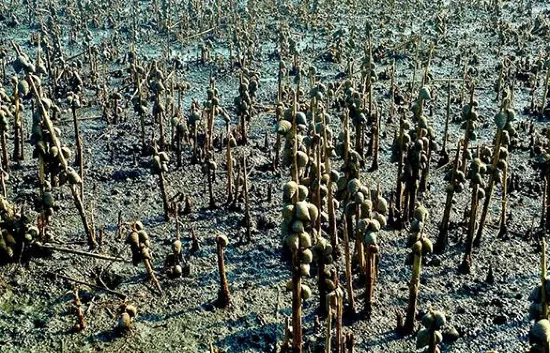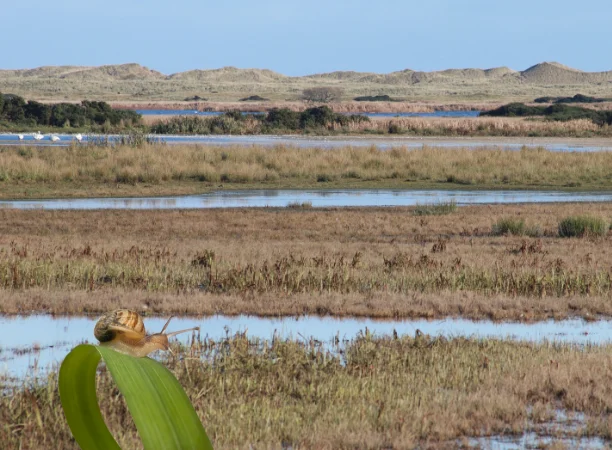When it comes to restoring ecosystems by replanting trees and vegetation, there’s a critical factor that’s often overlooked, leading to less greenery and higher costs than necessary. A groundbreaking survey, encompassing nearly 2,600 restoration projects worldwide, highlights a glaring oversight in many conservation efforts: the failure to account for the damage done by plant-eating animals.
The Lure of Young Plants: A Buffet for Herbivores
Brian Silliman, the Rachel Carson Distinguished Professor of Marine Conservation Biology at Duke University, compares young saplings and sprouts to irresistible snacks for grazers. “In the early stages, these plants are like lollipops—irresistible little treats for grazers,” he says. This analogy sheds light on why new plantings might not survive their most vulnerable phases.
Despite the apparent threat, Silliman points out that a mere 10% of the surveyed projects had measures to fend off these hungry herbivores. This negligence represents a missed opportunity to significantly hasten ecosystem restoration, bolster its success, and bring down costs.

A Strategy for Greener Growth
Silliman, a coauthor of the study, outlines a straightforward solution: “Our analysis of the surveyed projects shows that introducing predators to keep herbivore populations in check or installing barriers to keep them at bay until plantings become more established and less vulnerable, can increase plant re-growth by 89% on average.” These findings suggest that such protections could yield gains equal to or surpassing those from excluding competing plants.
The study, which was a collaborative effort involving experts from 20 different universities and institutions, was published in the prestigious journal Science. Co-led by Qiang He, a professor of coastal ecology at Fudan University, and his colleague Changlin Xu, the research underscores a pressing need for a shift in restoration strategies, especially in the face of climate change.
He emphasizes the urgency of the matter, noting that “herbivores’ effects were particularly pronounced in regions with higher temperatures and lower precipitation.” This detail is crucial for regions already grappling with the impacts of a warming planet.

Rebalancing the Ecosystem
The decline of large predators, which naturally keep plant-eating populations in check, is part of the problem, Silliman explains. “If we want more plants, we have to let more predators in or restore their populations,” he asserts, drawing attention to the indirect consequences of diminishing predator numbers on vegetation.
Silliman doesn’t dismiss the role of herbivores entirely. Once the plants are firmly established, these animals become critical to maintaining the diversity and functionality of plant ecosystems. “Plants just need a small break from being eaten to get restarted making ecosystems,” he adds, advocating for a balanced approach that recognizes the roles of both predators and herbivores.
An Untapped Gardening Trick
Using predators to regulate herbivore populations at restoration sites is a largely underutilized tactic. Silliman likens this approach to discovering a “new gardening trick that doubles your yield,” a method that could amplify plant diversity and expedite the healing of ecosystems essential for both human and environmental well-being.
The survey’s implications reach far and wide, potentially influencing future policies and practices in ecosystem restoration. With the input from a global team of researchers, the study sets the stage for a more holistic approach to conservation, one that could foster more robust and resilient ecosystems in our changing world.
As climate change continues to pose challenges to vegetation growth, Silliman’s closing thoughts resonate with a sense of urgency and possibility: “Conventional restoration is slowing our losses, but it’s not expanding vegetation in many places, and climate change could make that even more difficult.”
More To Discover
- There Are Trillions of Tons of Clean Power Beneath U.S. Soil
- San Diego Man Makes History as First in U.S. Charged for Smuggling Climate-Harming Gases
- Global Biofuel Race Accelerates: Major Investments Drive Shift Towards Renewable Energy
- Solved: Mysterious Mass Deaths of Hundreds of Gray Whales Is Finally Explained
His message is clear: to see our ecosystems flourish, we must protect the young plants that will become the forests and grasslands of tomorrow.



















